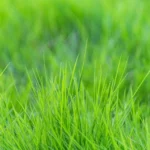
The Baobab tree is native to the African savanna and is known for its distinctive shape and impressive size. These trees can grow to be over 100 feet tall and have a trunk diameter of up to 36 feet, making them some of the largest trees in the world. The Baobab’s trunk is thick and sturdy, capable of storing up to 31,700 gallons of water in its woody tissues. This allows the tree to survive in hot and arid climates where water is scarce.
In addition to their impressive size, Baobab trees are also known for their long lifespan. Some Baobabs are thought to be over 3,000 years old, making them among the longest-living plants on earth. These trees are also often referred to as “the tree of life” because they provide food and shelter for a wide range of animals. Many species of birds and mammals, such as monkeys and bushbabies, live in the branches of the Baobab tree.
Baobab trees are deciduous, meaning they lose their leaves in the dry season. When this happens, the tree’s branches resemble the roots of other trees, giving it a unique and upside-down appearance. The bark of the Baobab tree is thick and rough, and is often used by locals to make ropes and cloth. The leaves of the Baobab tree are also edible and are commonly used in African cuisine.
The fruit of the Baobab tree is also known for its health benefits. The fruit has a hard, woody shell that encloses a white powdery substance known as “monkey bread.” This powder is rich in vitamins, minerals, and antioxidants, and is often used in traditional medicines to treat a variety of ailments.
In addition to their many unique characteristics, Baobab trees also play an important role in the environment. They help to improve soil quality by fixing nitrogen from the air into the soil, making it more fertile for other plants to grow. The trees also provide shade and shelter for other plants and animals in their ecosystem.
Despite their importance, Baobab trees are under threat from a variety of factors. Deforestation, habitat destruction, and the effects of climate change are all contributing to a decline in the population of these majestic trees. In some parts of Africa, Baobab trees are protected by law and efforts are being made to conserve and regenerate their populations.
In conclusion, the Baobab tree is a unique and fascinating species that plays an important role in the African ecosystem. Its impressive size, long lifespan, and valuable fruit make it a valuable resource. However, these trees are under threat from a variety of factors and it is important to take steps to conserve and protect them for future generations to enjoy.









